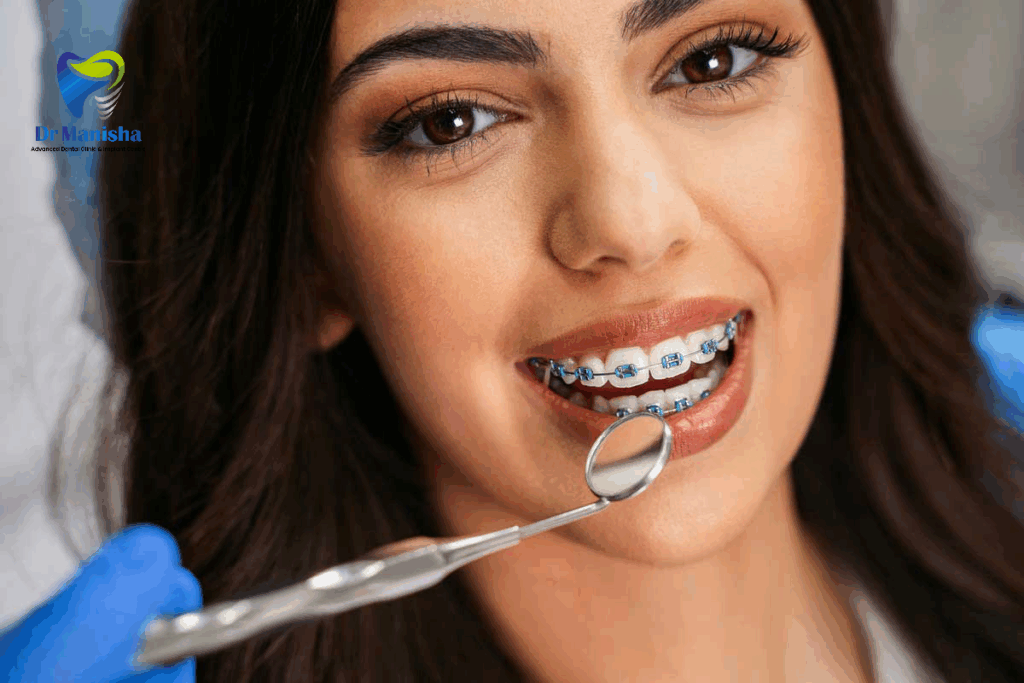A confident smile is one of the most noticeable features of your personality. But for many people, misaligned or crooked teeth can affect not just appearance but also dental health and self-esteem. Fortunately, braces have become a highly effective and widely accepted solution to correct alignment issues and help you achieve a healthier, straighter smile.
In this blog, we’ll explore what braces are, why they’re needed, types of braces, treatment process, and what to expect during your orthodontic journey.
What Are Braces?
Braces are dental appliances used by orthodontists to align and straighten teeth. They work by applying continuous pressure over time to gradually move teeth into the correct position. Braces can fix issues like:
-
Crooked or crowded teeth
-
Overbite or underbite
-
Gaps between teeth
-
Jaw misalignment
Braces not only improve your smile but also help maintain better oral health, reduce the risk of gum disease, and improve chewing and speech function.
Why Do You Need Braces?
Braces are often recommended for both children and adults who experience:
-
Misaligned teeth or bite issues
-
Difficulty cleaning between crowded teeth
-
Jaw pain due to alignment problems
-
Speech difficulties caused by dental structure
-
Desire for aesthetic improvement
An early orthodontic evaluation (around age 7) can help detect problems before they become severe, but it’s never too late to get braces.
Types of Braces
There are several types of braces available today, catering to different needs, preferences, and budgets:
1. Metal Braces (Traditional)
-
Most common and effective
-
Made of high-grade stainless steel
-
Visible but cost-effective
-
Suitable for all kinds of alignment issues
2. Ceramic Braces
-
Function like metal braces but use tooth-colored or clear brackets
-
Less noticeable
-
Require more care to avoid staining
3. Lingual Braces
-
Placed behind the teeth (tongue side)
-
Completely invisible from the front
-
More complex and may take time to adjust
4. Clear Aligners (e.g., Invisalign)
-
Removable and virtually invisible trays
-
Comfortable and aesthetic
-
Require discipline to wear for 20–22 hours a day
-
Best for mild to moderate alignment issues
What to Expect During the Braces Treatment
1. Initial Consultation
Your orthodontist will examine your teeth, take X-rays, photos, and impressions to design a personalized treatment plan.
2. Fitting the Braces
Braces are carefully placed on your teeth using special adhesives. This process usually takes 1–2 hours.
3. Regular Adjustments
You’ll visit the clinic every 4–8 weeks for adjustments. This helps apply the right pressure to guide teeth into position.
4. Treatment Duration
The average treatment time ranges from 12 to 24 months, depending on your case and how well you follow instructions.
Living with Braces
Living with braces takes some getting used to, but with the right care, it becomes easier over time:
-
Maintain excellent oral hygiene with brushing and flossing after meals
-
Avoid sticky, hard, or sugary foods that can damage brackets
-
Wear retainers after braces to prevent teeth from shifting back
-
Report any loose wires or brackets to your orthodontist immediately
Mild discomfort or soreness after adjustments is normal and usually fades in a day or two.
Benefits of Braces
-
Straighter, more attractive smile
-
Improved bite and jaw function
-
Easier cleaning and better oral hygiene
-
Boost in confidence and self-esteem
-
Prevention of future dental problems
Conclusion
Braces are more than just a cosmetic fix — they are a long-term investment in your oral and overall health. With a wide range of options and improved technologies, getting the perfect smile has never been more accessible or comfortable.
If you’re ready to begin your smile transformation, consult a qualified orthodontist to explore the best treatment option for your needs. Remember, a beautiful smile begins with a single step — and braces could be yours.

